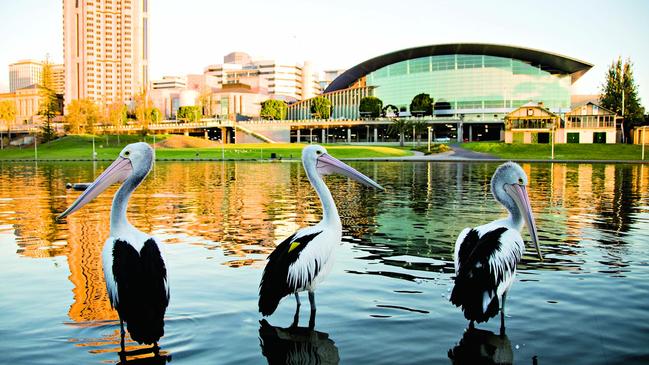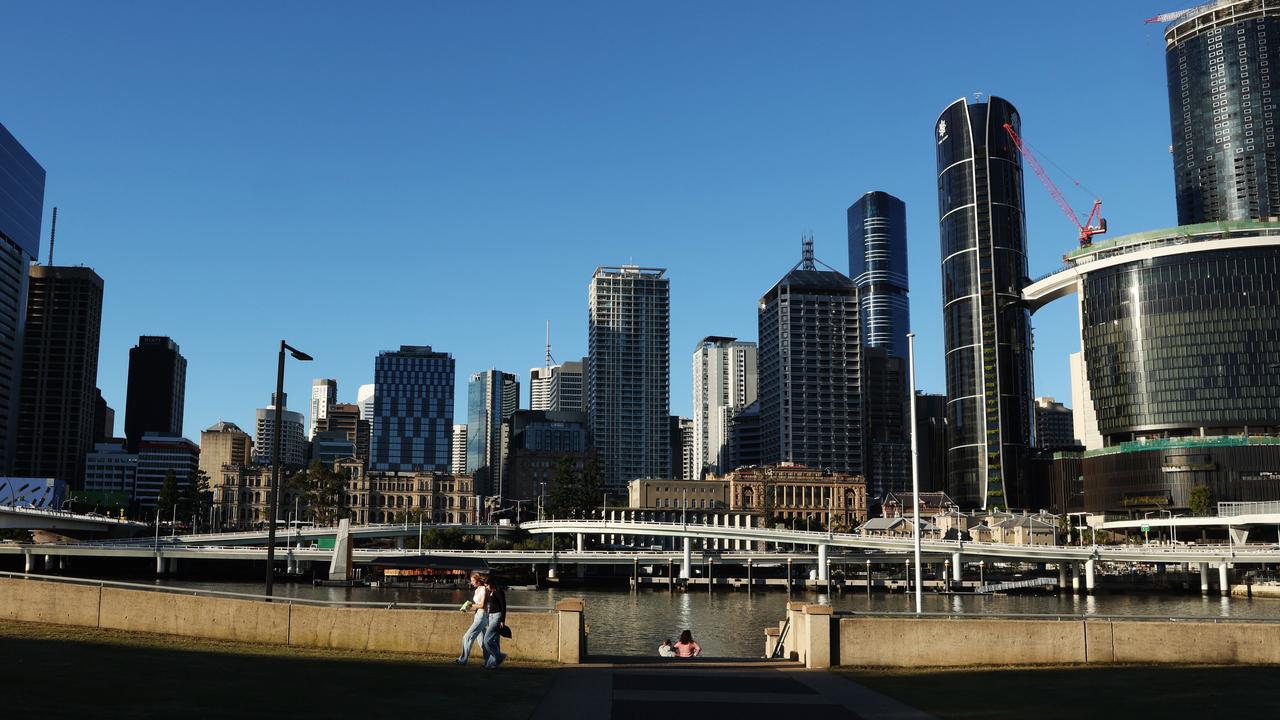Melbourne now officially the property market’s bargain basement
The capital of Victoria’s slide down the national property ladder is unprecedented – are we seeing a new order in the Australian market?

Business
Don't miss out on the headlines from Business. Followed categories will be added to My News.
Talk about humiliation … Adelaide is set to pass by Melbourne in terms of the average property price later this month. It’s a new high for Adelaide, or a new low for Melbourne depending on which way you look at it.
Either way something unprecedented is happening in the Australian property market. When Adelaide (population 1.3 million) is dearer than Melbourne (population 5 million) the natural order of things has obviously been disturbed and there are opportunities for investors.
Back in March we asked “who killed the Melbourne market?” because at that time it looked like the state government in Victoria was hellbent on taxing the property market into submission. If that was the strategy, it has certainly hit its goal.
Melbourne prices have been falling all year, just as every other mainland state capital is rising.
As Eliza Owen of CoreLogic puts it: “We have not seen such a mixed picture in the Australian property market for many years.”
As it turned out, we got it only half right back in March with the suggestion that state land taxes had frozen the Victorian market.
Earlier this week, AMP released a new report on the national residential market and it concluded the key issue dictating property prices across Australia is supply. AMP economist Diana Mousina explained: “Fundamentally, Australia is not building enough homes to keep up demand, which is putting upward pressure on prices and rents.”

But it’s the flip side that we rarely see – and we are seeing it now in the city of Melbourne. The city has an oversupply, and an oversupply leads to downward pressure on prices.
Across Melbourne there are simply too many properties on the market to match demand – even demand fuelled by immigration. In fact there have been about 100,000 more homes built in Melbourne than Sydney in the last five years.
For owner-occupiers it means improved affordability. For existing investors it means you are at a disadvantage. However, for new investors it is a standout opportunity.
A new order?
The reordering of the national market is happening against a backdrop of what looks to be another good year for national property investors.
In calendar 2023, prices lifted across the board by around 9 per cent while vacancy rates – at a rock bottom level of 1 per cent – meant rent rises were regularly in double digits.
Can those numbers be repeated in 2024? In the first six months of the year the national average price rose about 4 per cent and the monthly pulse is weakening. Most analysts expect prices will not quite match last year with an increase in house prices of perhaps 7 to 8 per cent for the year and rent increases of about 5 per cent.
The slowing tempo of the market comes down to three key factors:
• Firstly, the rate cut never came. And there needs to be a lot more evidence that it will come this calendar year. After all, we have only just eliminated the risk of a rate rise with this week’s better-than-expected consumer price inflation numbers.
• Second, the immigration boost that pushed prices higher and squeezed rental capacity last year is continuing but the pressure is easing as total immigration numbers begin to drop.
• Third, there is some evidence that the labour shortage of 2023 is also easing a little.
The other key point emerging once again is the outstanding merit of the standalone property.
Unit prices may well be bouncing in the short term as they play catch up with houses but the latest revelation from analysts is that bigger standalone houses with multiple bedrooms is the sector where rent growth is going to be best in the future.

As a CoreLogic report suggested this week: “There are stronger rental growth trends in larger dwellings, potentially reflecting the formation of share houses or multiple family households, with an 8.7 per cent rise in rent for houses with five bedrooms or more.”
In contrast the opposite is happening in apartments. There is a substantial slowdown in the rent growth of smaller dwellings, with annual growth in one-bedroom units and studios slowing from 16.8 per cent in the year to April 2023 to 7.1 per cent in the past 12 months.
The oversupply state
As we noted earlier, there has rarely been a time when the national average numbers were so misleading. Inside what seems like modest growth for the wider market, certain pockets are going backwards while other areas are shooting out the lights (such as Perth gaining two per cent a month).
In terms of prices the most intriguing is the relationship between three cities. Here’s the numbers: Sydney is in a league of its own with n average median dwelling value above $1.1m, and Brisbane is around $873,000. After that it looks like this: Melbourne $781,000 (and dropping), Adelaide $776,000 and Perth $773,000 (both rising).
This growing divergence between the performance of individual capital cities has consequences far beyond property prices.
For example, there has always been a stream of internal migration from Victoria to Queensland. It’s been easy to sell your house in Melbourne to buy a cheaper house in regional Queensland and have some money left over for retirement income.
But that strategy does not work any longer if Queensland prices are higher than Melbourne prices.
Likewise, the salary difference between cities have become a yawning gap. A young professional offered a new job in Sydney for an extra 10 per cent salary is not going to be fully compensated for the change – a two-bedroom with views in Melbourne will be exchanged for a bedsit at the back of a block in Sydney. Why would anyone move under these conditions unless they were guaranteed a better career path in the long term?
So, can the new national order remain in place? Most economists believe in a ‘reversion to the mean’ – a creed that says things will more or less come back to normal sooner or later.
Can Adelaide seriously outpace Melbourne in terms of property prices and capital growth? Logically, it is inconceivable.
Already there are questions over the Adelaide and Perth markets due to the relatively small volumes of sales recorded in those cities.
If you look at the numbers closely, the volume of property for sale in Melbourne is higher than average – conversely, there is less for sale than the average year in most of the other capitals.
Moreover, there is nothing on the immediate horizon that suggests things are going to turn overnight. CBA says “house price expectations contained within the Westpac/Melbourne Institute report shows price expectations have not seen any significant shift”.
Nerida Conisbee, chief economist at Ray White explained on a recent episode of the Money Puzzle podcast how the replacement cost of apartments in inner city Melbourne suburbs is now higher than the sale price of existing stock. This is a textbook example of when property is “cheap”.
The natural order will return – perhaps not in an identical fashion to the pre-Covid market, but something pretty similar. In the meantime, it looks like Melbourne is being offered at a discount.
James Kirby hosts the twice weekly Money Puzzle podcast
More Coverage
Originally published as Melbourne now officially the property market’s bargain basement





